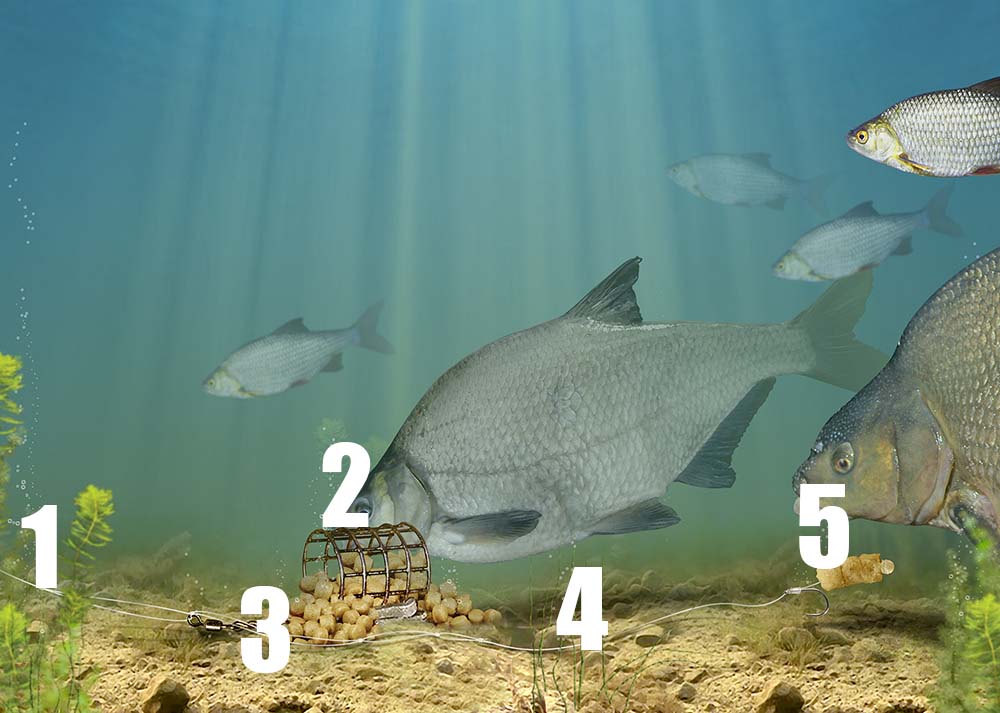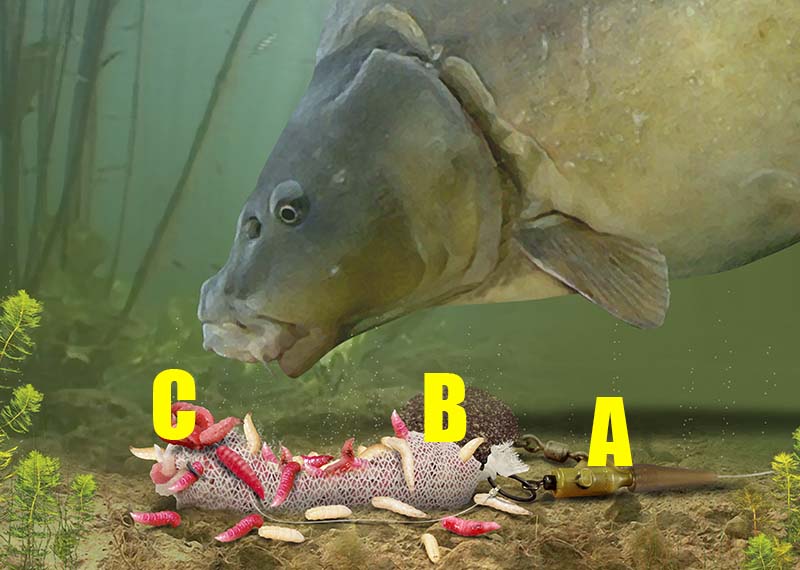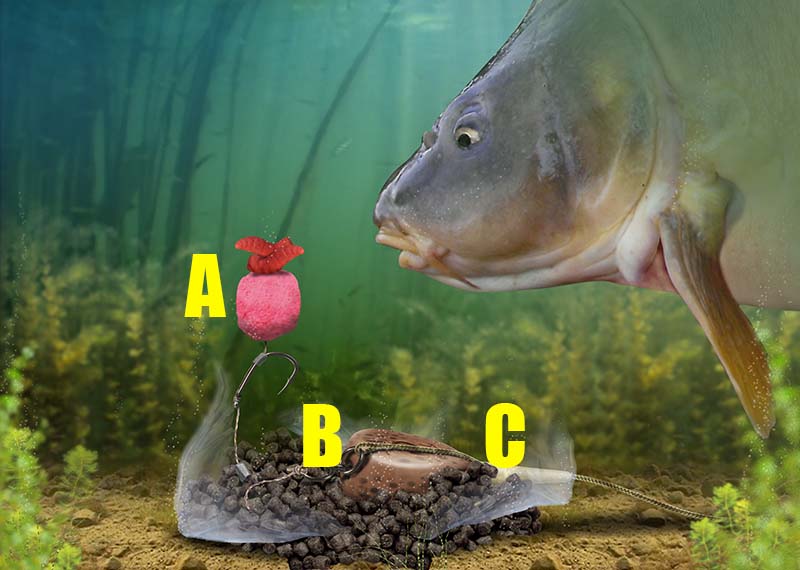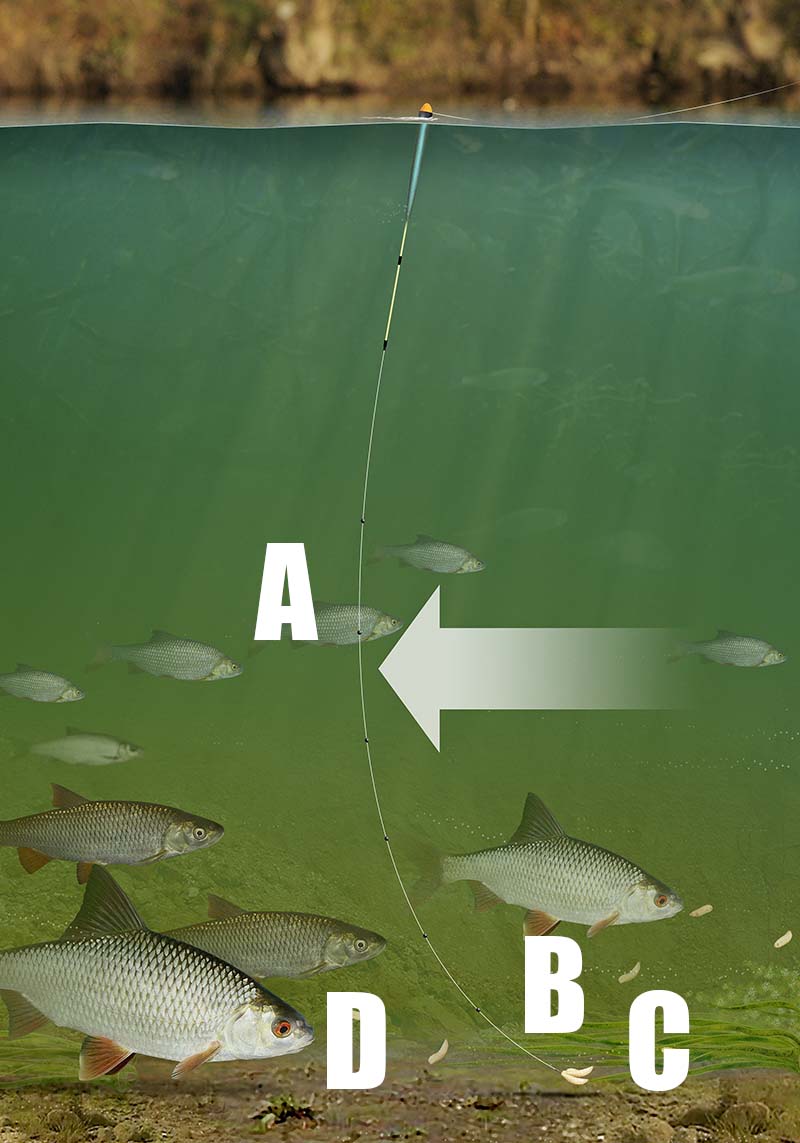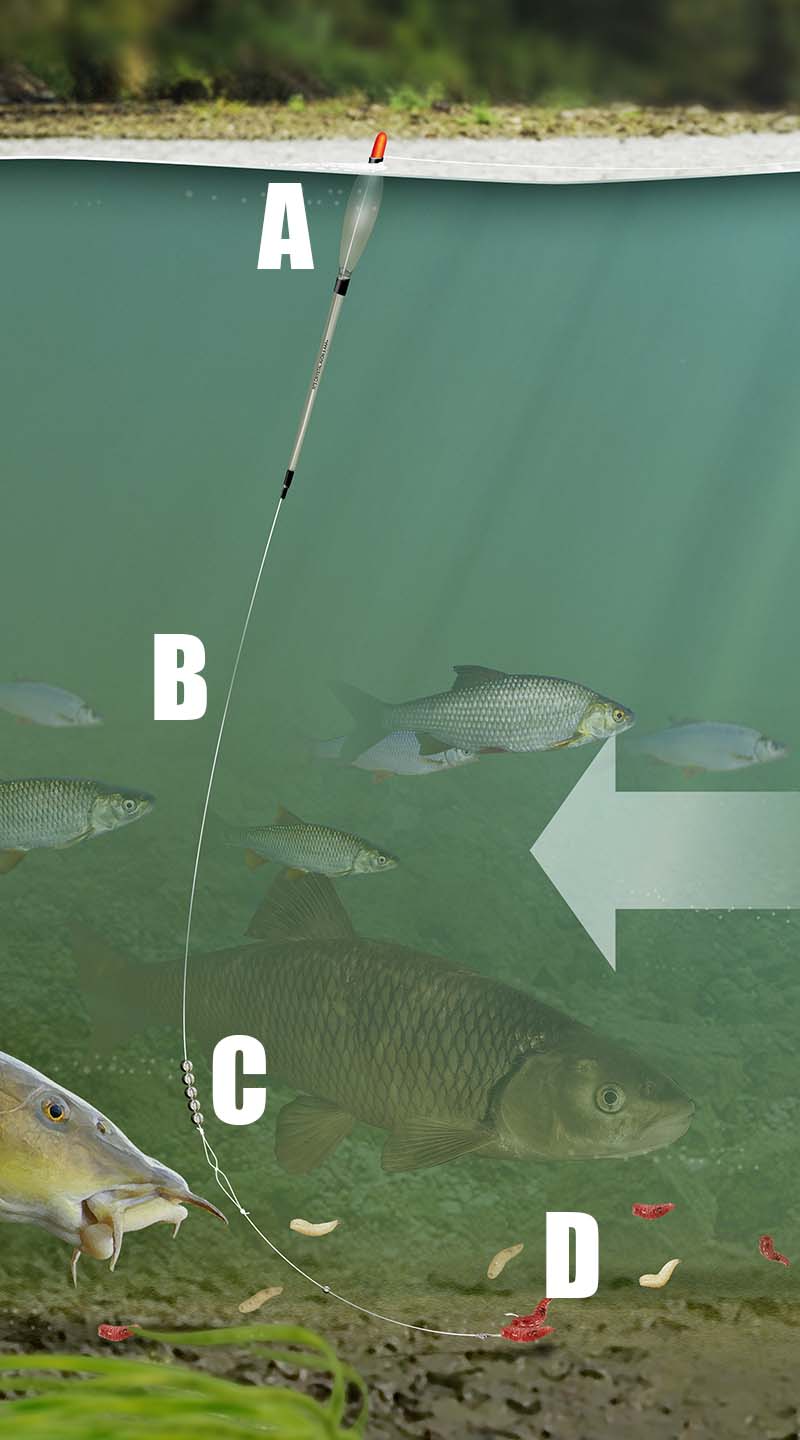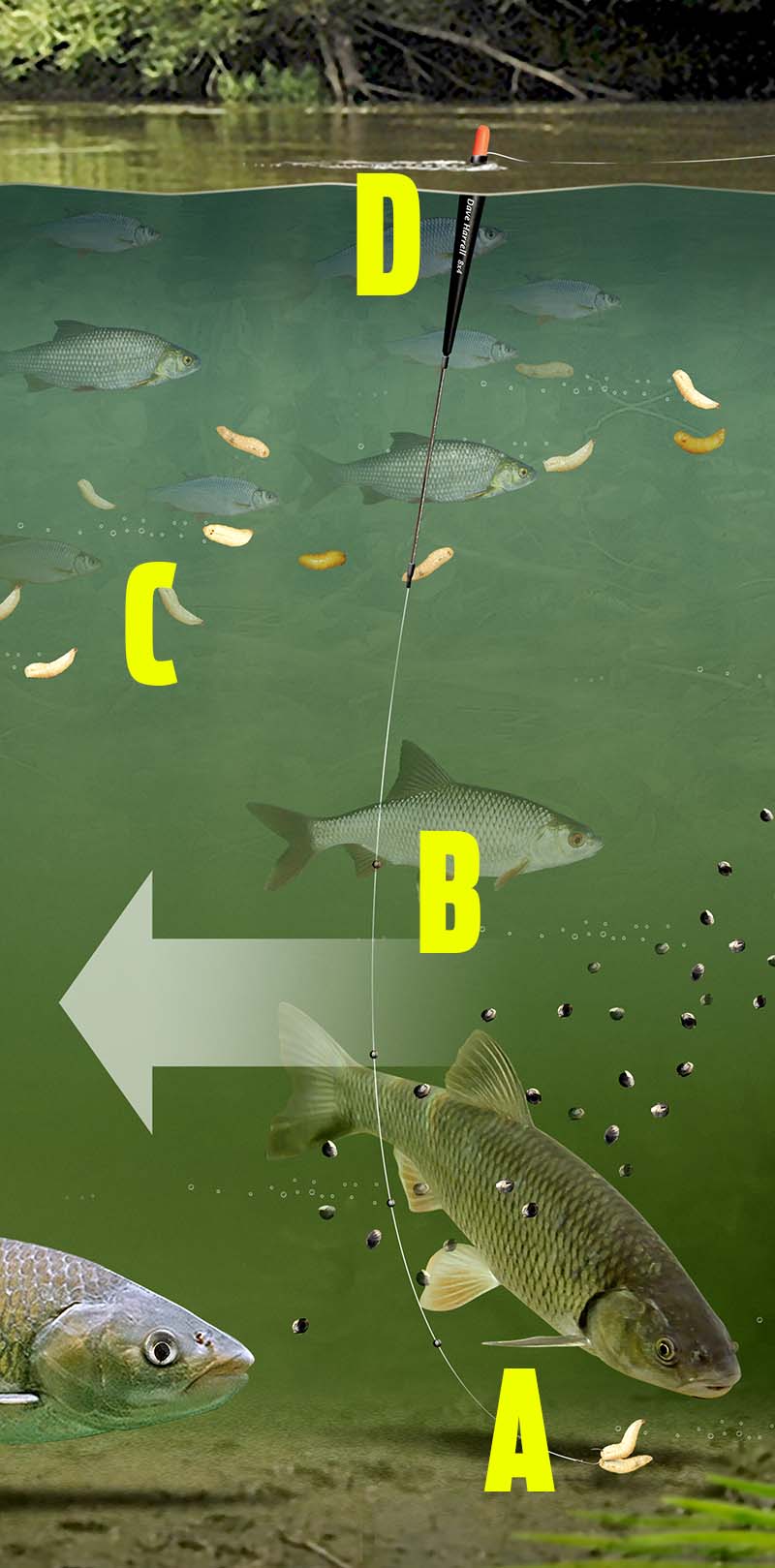Tench feeder rig
When going after tench there are many tactics that can be used, for instance when you are on a larger gravel pit it is a feeder approach that often scores. This is thanks to its characteristic of placing bait close to the hookbait even when fishing towards distant gravel bars and other features.
While the feeder is brilliant for tench, it often has to be rigged-up with a short hooklength stopped close to the feeder to prove successful for tench. This is because tench tend to sift through food and detritus while hardly moving. Use a long hooklength and the hookbait is likely to be expelled before a bite is registered!
Maggots, casters and worms are all brilliant tench baits because they mimic the fish’s natural diet, and this rig can be used with all three of these baits. To make the hookbait stand out, it pays to pop-up the bait. This can be easily achieved using a slither of rig foam attached to the hair, with the bait fished on the hook. Follow the steps below to learn how to tie this brilliant rig...
Tie a size 10 forged hook to a short length of 8lb fluorocarbon using a knotless knot and attach a slither of red rig foam to the hair
At the other end of the hooklength attach a mini swivel using a four-turn grinner knot. The hooklength should be around 4in long
Slide a medium-sized Clinger on to the mainline, followed by the hooklength swivel and then another Clinger
Slide a mini rig sleeve on to the mainline and then tie on a medium-sized Oval feeder
Adjust the Clingers so the hooklength is fixed just above the feeder
Tommy Pickering | How to make my simple groundbait feeder rig!
This is my favourite set-up for all my open end feeder fishing. It’s a very simple rig for wire cage and plastic frames, and the stiff boom which is tied in the end of the mainline means tangles are kept to a minimum.
As it’s free running it’s completely safe, too. Use it for bream, tench, roach, perch and even carp. All you need is your reel line, your feeder with a swivel eye or snap link attached, a packet of No8 Preston Stotz weights and your chosen hooklength.
Try this simple and tangle-free feeder set up.
Step 1.
Take the mainline or shockleader between thumb and first finger of both hands and twist in opposite directions to twizzle it together.
Step 2.
Ensure that the length of the twizzled line is longer than that of the feeder and link, to stop the two tangling when you cast the finished rig.
Step 3.
Bring the twisted line back over itself to form an overhand loop knot. Pass the end through itself twice and pull to tighten the knot properly.
Step 4.
You’re now left with a twisted section of line of around 6ins long, called a boom. Trim the tag end to reduce line spin when reeling in.
Step 5.
Now slide the swivel eye of the snap link attached to your feeder on to the twisted line and over the knot of the stiff boom.
Step 6.
Attach two No8 Stotz to the mainline just above the twisted section, with the feeder above. These butt against the knot and stop the feeder too.
Step 7.
Time to add your hooklength, which you will probably have already tied. Push the hooklength loop over the end of the twisted boom.
Step 8.
Put the hook itself through the end loop in the twisted boom. Then pull the whole hooklength through with it as it goes through.
Step 9.
The loop-to-loop forms like this - you may need to flick the hooklength over its own loop knot to achieve this perfect connection. Pull tight.






